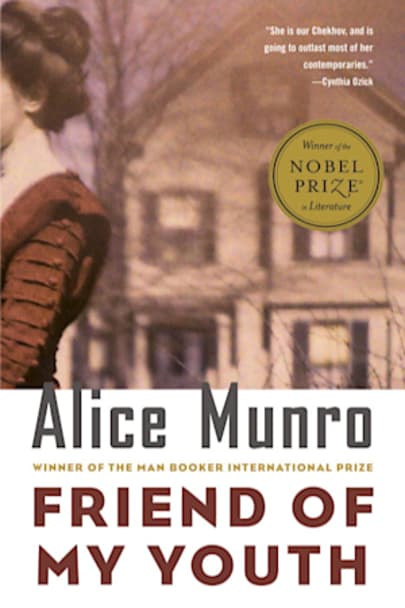WINNER OF THE NOBEL PRIZE® IN LITERATURE 2013The ten miraculously accomplished stories in Alice Munro’s Friend of My Youth not only astonish and delight but also convey the unspoken mysteries at the heart of all human experience. ”[Friend of My Youth is] a wonderful collection of stories, beautifully written and deeply felt.”–Michiko Kakutani, New York Times



Alice Munro’s stories are remarkable and much of this has to do with voice. Munro’s voice seemed to come from some intelligence inside her that sounded like it was about a thousand years old, regardless of what she was writing about. One story to pay special attention to in this 1990 collection is “Meneseteung,” about an obscure 19th century poet named Almeda Joynt Roth. In researching this story, Munro wanted to find an actual obscure 19th century female Canadian poet and her books of poems and pirate them for a story. But she quickly discovered that obscure poets are obscure for a reason: their poems are terrible. So she invented everything for this story from Almeda herself to her poetry books to her extensively quoted poems. It all sounds completely authentic, but in fact it’s all made up. In other words, we’re catching Munro at a post-modern moment in her career. Almeda’s story is a classic one for Munro, who wrote exhaustively about all the ways that women and men can manage to utterly fail to relate to each other. Almeda is simply trying to be a poet in a small Canadian town and to be taken seriously and to develop some sort of a readership for her work. But she falls victim to what stunts many artistic careers: she can’t seem to break out of local notariety onto a larger national stage. Her presence attracts the attention of her bachelor neighbor, Jarvis Poulter, who presumes to advise her about her affairs, and is the right age and type to be a suitor. Almeda’s house sits close to the sketchy part of town, near some taverns, and on weekends she can hear what goes on in the wee hours after the taverns close, which ranges from screaming matches to actual fights to beatings of women by drunk men. One morning, one of these women turns up in Almeda’s yard, passed out. Against her better judgement, she goes next door to ask Jarvis for his assistance. What’s interesting about this story for those who know Munro’s work is that — at the same time she is constructing this story — she is also deconstructing it. At first the narrator sounds quite confident of the facts of Almeda’s story. But as she continues the narrator begins to admit that some of what she is relating is pure conjecture, because not enough is known about Almeda for her to be one hundred percent sure these things really happened. At times, it looks like Almeda and Jarvis are going to wind up married at the end. But the story takes a sudden swerve when Almeda asks for Jarvis’s help with this bruised and battered woman. This is when she discovers that his idea of how to help a woman who has been beaten and left for dead in someone’s yard is shockingly different from her own.